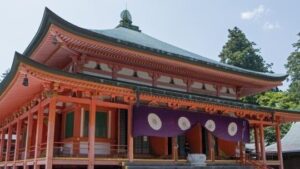Byodoin Temple, Fujiwara Yorimichi's Aspiration for a Peaceful Death in the Pure Land of Buddhism
The Byodoin Temple - a World Heritage – stands as the oldest existing Buddhist temple situated in the southeastern region of Kyoto. Beneath the autumn sky, the vermilion hue of the Phoenix Hall, known as “Hou-ou-do”, captures the eye, while two auspicious golden Phoenix statues adorn its roof. The hall's reflection dances gracefully upon the nearby pond, accentuated by the vibrant red of the surrounding maples. The temple's awe-inspiring beauty leaves viewers captivated. Byodoin Temple epitomizes the magnificence of the Fujiwara clan during the Heian period (794-1185), particularly Fujiwara Michinaga and his son, Yorimichi. Within the Phoenix Hall lie numerous national treasures, including the principal image, the Seated Statue of Amitabha. Here, visitors can experience Fujiwara Yorimichi's longing for a peaceful death in the Pure Land of Buddhism. Have you ever wondered the reasons behind the construction of such a lavish temple? Let us delve into the historical stories of the Fujiwara family.
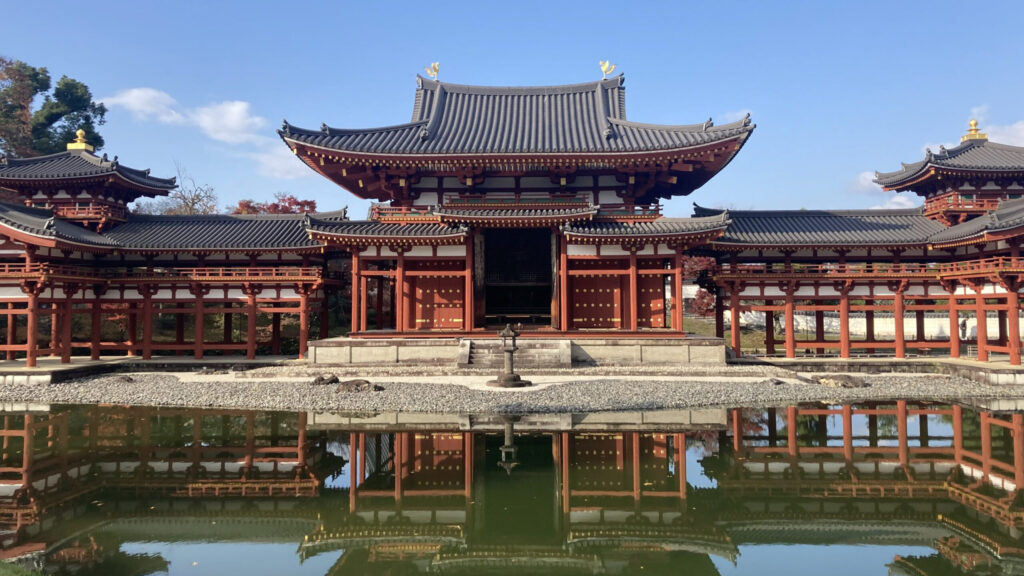
A Must for A Successful Rebirth In the Pure Land
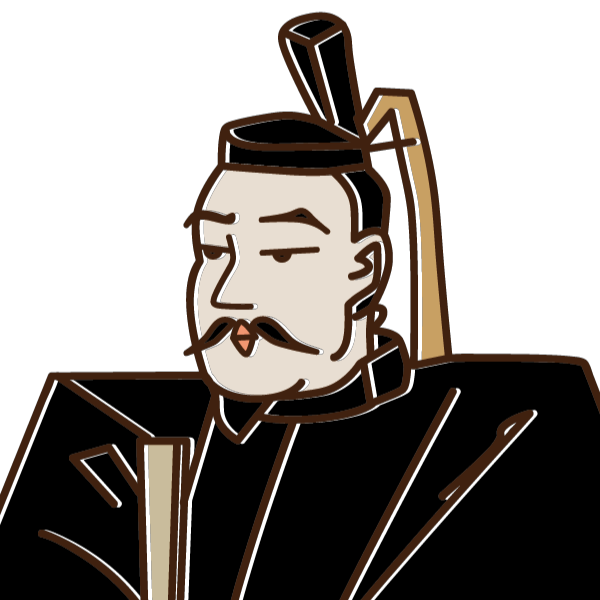
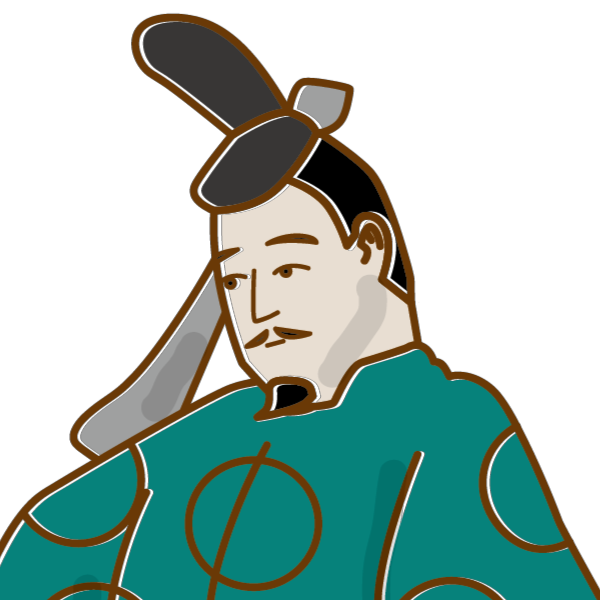
In 1052, at the age of 60, Fujiwara Yorimichi (992-1074, 藤原頼道) rebuilt the villa belonging to his father, Fujiwara Michinaga (966-1028,藤原道長), to manifest the peaceful Gokuraku (The Pure Land in Buddhism) within this world. The following year, Yorimichi completed the Amitabha Hall, renowned as Hou-ou-do. Positioned on the sun’s trajectory, along the east-west axis, this placement reflects the belief that the Pure Land resided in the west. Across the Ajikan pond, a seated Amida-Nyorai (Amitabha Tathagata) statue can be seen head-on, with the sun setting on its back on vernal and autumnal equinox days. Encircling the golden-seated Amitabha Tathagata, over 50 wooden bodhisattva statues flying on clouds are extending a warm welcome to all living beings to the Pure Land. Some figures engage in melodious tunes, others gracefully dance, while some offer prayers to Amitabha Tathagata. Notably, one of these bodhisattvas bears the word “Love” (愛 in Japanese) inscribed in black ink on its back, symbolizing their boundless love for all individuals.
The year, when Yorimichi built Byodoin Temple, was precisely the beginning year of the "Age of the end of Dharma" or Mappo. It was believed to signify the decline of the efficacy of Buddhist teachings. Consequently, the world descended into chaos, promoting individuals to seek rebirth in the Pure Land. The how-to book about an ideal mortal moment, Ojoyoshu gained widespread popularity, with people diligently reading and learning how to attain birth in the Pure Land. The key to these teachings lies in cultivating a vivid and intricate visualization of the Pure Land while chanting Nenbutsu (the recitation of "Amitabha Tathagata"). At 30, Yorimichi ascended to the powerful position of Grand Minister of State, following in his father's footsteps. In his later years, Yorimichi dedicated himself to the practice of visualizing the Pure Land, and it is likely his spirit attained a tranquil passage to the Pure Land upon his peaceful death at the age of 83.
"I Shine Like A Full Moon", Michinaga Sang
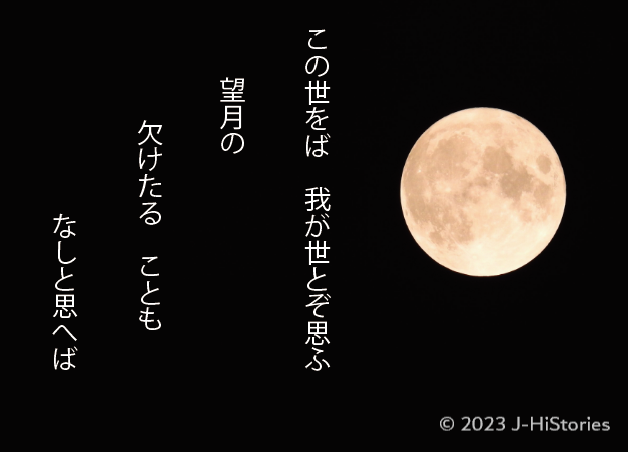
How did Michinaga, despite his eldest brother holding the position of the Grand Minister, manage to rise to become the most powerful aristocrat at the Imperial Court? Michinaga's ascent can be attributed to the downfall of his political rivals, his political skills, and his familial connections status as a maternal relative of three emperors: Ichijo (980-1011, 一条天皇), Sanjo (976-1017, 三条天皇), and Goichijo (1008-1036, 後一条天皇) over several decades. When Michinaga assumed the role of regent, he composed a Waka (Japanese poetry):
"This world, I am thinking, is indeed my world. Like the full moon, I shine, uncovered by any cloud."
(この世をば 我が世とぞ思ふ 望月の 欠けたる ことも なしと思へば)
Yorimichi succeeded Michinaga's position and provided support to the subsequent two emperors, the 69th Emperor Go-Suzaku (1009-1045, 御朱雀天皇) and the 70th Emperor Go-Reizei (1025-1068, 後冷泉天皇), for a remarkable span of approximately 50 years.
Michinaga’s Daughter Shoshi Brought His Prime
It all began with Shoshi (988-1074, 彰子), Michinaga's daughter, entering the imperial family as the consort of Emperor Ichijo at the young age of 12. At the time, Emperor Ichijo was already married to Empress Teishi (977-1001, 定子), who was the daughter of Michinaga's eldest brother, and Empress Teishi gave birth to the first prince, Atsuyasu. Michinaga's fortunes took a turn when both Michitaka and his brother fell ill and passed away, leaving Empress Teishi without her key supporters. To compound matters, Empress Tesihi's other brother was banished after engaging in a public altercation with Michinaga and also mistakenly attacking the former emperor. As the political influence of Teishi's supporters waned, Michinaga made Shoshi assume the role of the empress, despite Teishi already holding that title. This unprecedented move resulted in the coexistence of two empresses alongside one emperor, a first in Japanese history. Eight years later, Shoshi gave birth to Prince Atsuhira (later known as Emperor Goichijo). Michinaga continued to influence Emperor Ichijo to abdicate the throne and to disregard Teishi’s Prince Atsuyasu, as a crown prince. Instead, Michinaga favored his grandson, Atsuhira, for the position of the next crown prince.
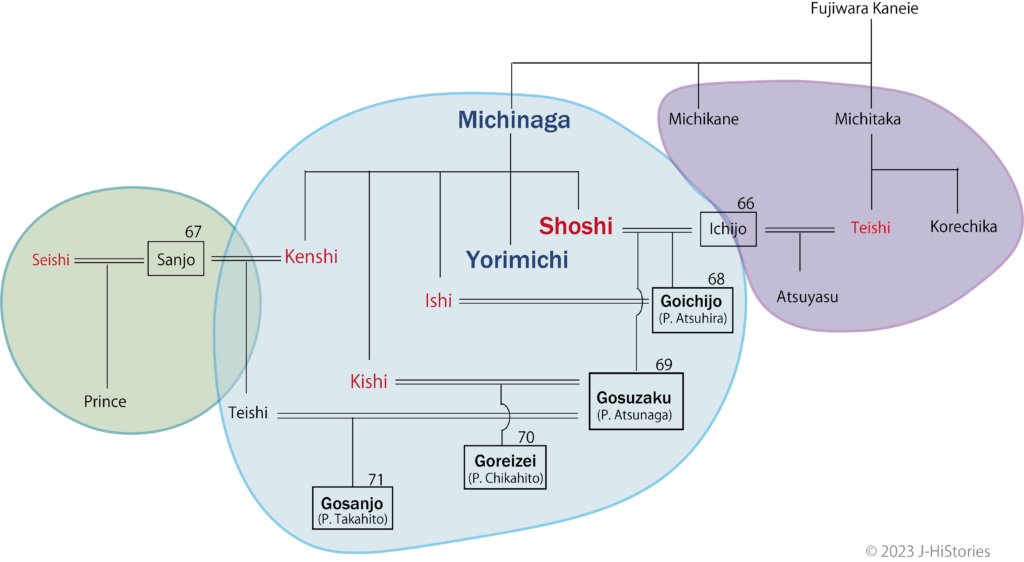
Feud with Emperor Sanjo
According to succession norms, the first prince, Atsuyasu, should have rightfully become the crown prince. However, due to the strong influence of Michinaga, Emperor Ichijo decided to abdicate the throne to Emperor Sanjo. At that time, Emperor Sanjo had his lady, Seishi (972-1025, 娍子), and four princesses. In an attempt to secure a future crown prince, Michinaga arranged for his daughter, Kenshi (994-1027, 妍子), to enter the imperial palace. However, Emperor Sanjo had aspirations for direct administration, leading to an intensified conflict between him and Michinaga. Despite having accepted Michinaga's daughter as empress, Emperor Sanjo, seemingly acting against Michinaga, also decreed Seishi to be empress. This resulted in the anomaly of two empresses serving alongside one emperor, a situation similar to what Michinaga had orchestrated previously.
After a while, Kenshi gave birth, to a princess rather than a prince. Consequently, Michinaga shifted his focus and invested his efforts into Shoshi's two princes, hoping that one of them would become the crown prince. Simultaneously, Emperor Sanjo's ability to fulfill his political duties declined due to an eye disease, further straining his relationship with Michinaga. The situation worsened when a devastating fire engulfed the Imperial Palace, causing immense mental distress to Emperor Sanjo. In ancient times, such a fire disaster was believed to be a sign of the emperor's misrule. Eventually, Emperor Sanjo acquiesced to abdication, a decision that was influenced by both the deteriorating relationship with Michinaga and his illness.
Three Empresses from One Family
After all, as Michinaga had desired, Prince Atsuhira ascended to the throne as Emperor Goichijo at the young age of eight in 1016. Michinaga assumed the role of regent and took charge of governing affairs on behalf of the young emperor. Thus, at the age of 50, Michinaga reached the pinnacle of power, and it marked the "spring of his life". In 1018, Michinaga arranged the marriage of his eighteen-year-old daughter, Ishi, to marry Emperor Goichijo, who then became an Imperial Consort. In October of the same year, Ishi was officially invested as empress. This event marked the first occurrence of three empresses from one family in Japanese history, with Shoshi being the empress of the 66th Emperor Ichijo, Kenshi of the 67th Emperor Sanjo, and Ishi of the 68th Emperor Goichijo. It was during this significant period that Michinaga composed the renowned poem "Like the full moon, I shine,…" The power of the Fujiwara clan was based on being the maternal relatives of the emperors. It dates back to the 45th Emperor Shomu in the Nara period (710-794) and lasted until the 20 century.
The Moon Wanes, Michinaga and Yorimichi Wish for Rebirth in the Pure Land
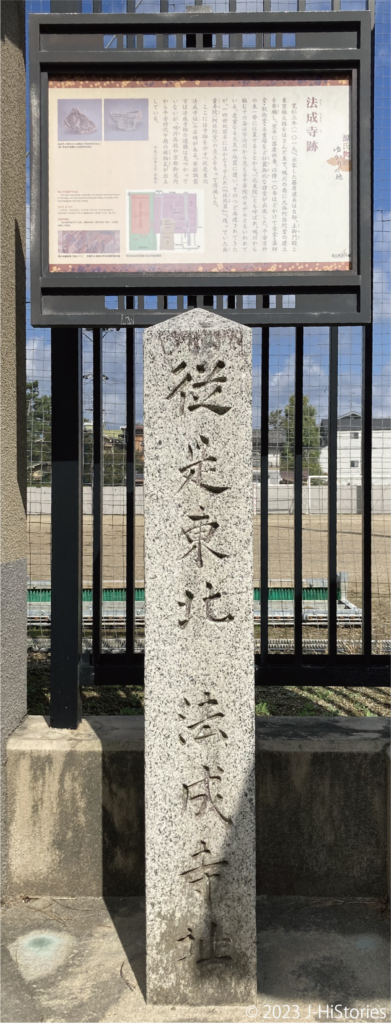
In his later years, Michinaga faced various ailments, including severe chest pain and weakened eyesight. Additionally, he had to endure the heartbreaking loss of his three daughters and one son, one after another. During this period, people believed that diseases, plagues, natural disasters, and fires were caused by Onryo (the vengeful spirits). It is plausible to consider that the grievances and hauntings of the many political enemies he had eliminated might have contributed to these afflictions amidst his prosperity. Meanwhile, Michinaga embarked on the establishment of the grand Hojoji Temple near the Kyoto Imperial Palace, where he engaged in daily prayers to Buddha, yearning for a peaceful death and rebirth in the Pure Land. In 1028, he tied his hand to the hand of the Amitabha Tathagata statue with a piece of string, laid down with his eyes facing to the west, seeking Nirvana (enlightenment). He peacefully passed away while reciting the Nenbutsu chant. However, it is said that he struggled and suffered immense pain, moaning in agony until his last moments, caused by diabetes and cancer. Following Michinaga's demise, his eldest son, Yorimichi, never attained the status of being the emperor’s maternal relative, and the emperor's lineage shifter to Emperor Sanjo family, leading to the birth of the 71st Emperor Gosanjo (1034-1073, 後三条天皇).
Building the Palace of the Pure Land in This World
Please visit and walk in and around the world of the Buddhism Pure Land, Byodoin, while considering the Fujiwara family’s prosperity, resourcefulness, and abilities to seize power in the court and Imperial Palace. This was also known as the era of Mappo (the beginning of the end of the world). Byodoin, with all its grandeur and opulence, was a temple where Yorimichi prayed to be reborn into the Pure Land of ultimate bliss, inheriting his father, Michinaga's wealth and power. However, their powers were brought by Shoshi and her Princes.
Lastly, one of the highlights of Fujiwara’s contribution to Japanese culture was Michinaga’s headhunting Murasaki Shikibu (970-1014?, 紫式部) to serve and develop the cultural literacy of his daughter Shoshi, the Empress of Emperor Ichijo in the early 11 century. Michinaga supported Shikibu by providing a lot of paper and ink which was very expensive at that time to enable her to continue writing “The Tale of Genji”, the masterpiece of Japanese imperial tales.
Fujiwara Michinaga & Yorimichi Timeline
| 710 | Relocation of the capital to Heijo-kyo in Nara from Asuka | Started Heian Period |
| 966 | Fujiwara Michinaga was born | Michinaga Age=1 |
| 986 | Emperor Ichijo ascended throne | 21 |
| 990 | Fujiwara Teishi married Emperor Ichijo | 24 |
| 992 | Fujiwara Yorimichi was born | 26 |
| 995 | Michitaka and Michikane passed away one by one | 29 |
| 999 | Fujiwara Shoshi married Emperor Ichijo, Teishi gave birth to Prince Atsuyasu | 33 |
| 1000 | Shoshi and Teishi became Empresses of Emperor Ichijo | 34 |
| 1008 | Shoshi gave birth to Prince Atsuhira (later, Emperor Goichijo) | 42 |
| 1009 | Shoshi gave birth to Prince Atsuyoshi (later, Emperor Gosuzaku) | 43 |
| 1011 | Emperor Ichijo abdicated to Emperor Sanjo, then passed away | 45 |
| 1012 | Fujiwara Kenshi and Seishi became Emperor Sanjo's Empresses | 46 |
| 1015 | Michinaga pressed Emperor Sanjo abdicate | 49 |
| 1016 | Emperor Ichijo abdicated to Emperor Goichijo | 50 |
| 1016 | Michinaga became a regent to Emperor Goichijo | 50 |
| 1017 | Michinaga resined a regent, Yorimichi became a regent to Emperor Goichijo | 51 |
| 1018 | Fujiwara Ishi married Emperor Goichijo and became an empress | 52 |
| 1018 | Michinaga sang Waka of his prosperity like the full moon | 52 |
| 1019 | Celebratoin of the completion of Muryojyuin Temple (later, Hojoji Temple) | 53 |
| 1021 | Fujiwara Kishi married Emperor Gosuzaku | 55 |
| 1025 | Kishi passed away | 59 |
| 1027 | Fujiwara Yorinobu and Kenshi passed away one by one | 61 |
| 1028 | Michinaga passed away | 61 |
| 1051 | Yorimichi established Byodoin Temple | Yorimichi= 50 |
| 1061 | Yorimichi achieved the highest positon by becoming a grand minister of state | Yorimichi= 70 |
| 1068 | Emperor Gosanjo ascended to the throne, who was not direct blood relation with Fujiwara family | Yorimichi=77 |
| 1074 | Yorimichi passed away | Yorimichi=83 |
Recommendations to visit
- Access: 20 min from JR Kyoto Station to Uji Station by JR Nara Line (Miyakoji Rapid). Then a 10-minute walk.


